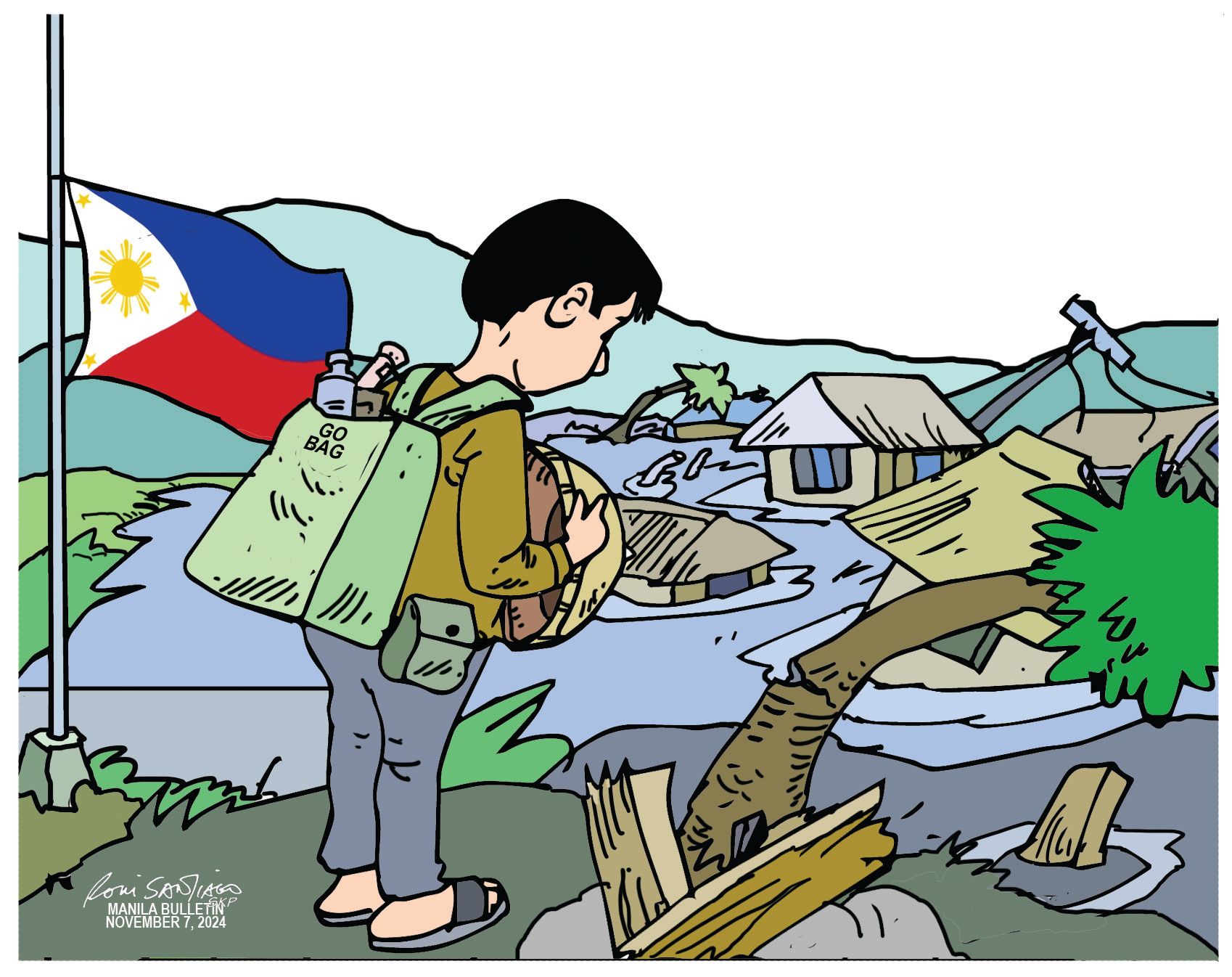
A Day of National Mourning declared in memory of lives lost during the onslaught of a strong tropical cyclone is not an expected act from the President of a country that is visited by at least 20 weather disturbances like storms and typhoons every year. Records on such declarations show that a Day of National Mourning had been declared in memory of fallen soldiers, church leaders, and government leaders.
But early this week, on Nov. 4, the country paused to remember those who lost their lives – about 150 of them – when severe tropical storm Kristine blew into the country, bringing a month’s rainfall in 24 hours, causing floods and damage to properties and agriculture. And super typhoon Leon came soon after that and shook extreme Northern Luzon.
With Proclamation 728, and in accordance with Republic Act 8941, the national flag was flown at half-mast on that day in all government buildings and installations across the country and abroad. The international community with embassies in the Philippines expressed their sympathies, many of them posting on social media photos of their respective flags flown at half-mast.
President Marcos’ proclamation has emphasized the fact that climate change and global warming are very real threats to our lives. We have in a way become used to the visits of typhoons that we have failed to evaluate if our disaster preparedness needs to be strengthened because the weather disturbances will come with stronger winds and more rain.
Even with the disaster preparedness measures of government agencies and private groups, the loss of lives and damages to property and to our food security caused by “Kristine” have been high. Here are some of the most relevant numbers from the National Disaster Risk Reduction and Management Council (NDRRMC) as of Nov. 5:
* 8,847,888 people and 2,249,345 families were affected by the two weather disturbances — Kristine and Leon — in 17 regions;
* 194,272 people or 48,146 families stayed in evacuation centers, while 517,705 individuals or 106,152 families were taking shelter in other places;
* 217,425 houses were damaged, 183,622 partially and 33,803 totally.
* Damage to agriculture was placed at ₱5,913,505,507; to infrastructure, ₱8,247,425,268; irrigation facilities, ₱1,032,188,000.
“Kristine” entered the Philippine area of responsibility (PAR) on Oct. 21 and made landfall over Isabela on Oct. 24. It left the PAR on Oct. 25. “Leon” entered PAR on Oct. 26, passing extreme North Luzon and exited on Oct. 31.
Because the country is located at the “typhoon belt” — and because climate change has changed the behavior of weather disturbances — disaster preparedness measures should keep on being upgraded to deal with the new wind strength, increased rainfall and flooding.
The enhancements on the present systems, and changes in strategies, have started with the President’s orders on relevant government agencies.
Warning systems will be improved by the Department of Science and Technology (DOST) while closely coordinating with the Department of the Interior and Local Government (DILG) to provide the public with timely information.
The National Irrigation Administration (NIA), Department of Energy (DOE), Department of Environment and Natural Resources (DENR), and the Metropolitan Waterworks and Sewerage System (MWSS) have been ordered to gradually reduce water levels in dams before a typhoon even arrives.
The National Disaster Risk and Management Council (NDRRMC) is analyzing how its disaster response measures can be enhanced to ensure the swift delivery of assistance to affected communities.
There is more work to do to enhance our disaster preparedness systems to protect people and our food sources from the effects of stronger weather disturbances.